Cheltenham Town capped off a brilliant season by winning League Two, which was their first-ever Football League trophy, and thereby winning promotion to League One for the 2021-22 season. While there were several factors behind this successful season, not least the impact of manager Michael Duff since his arrival in November 2018, one of the most intriguing and noteworthy aspects of Cheltenham’s season was their use of throw-ins as an attacking weapon. Regular watchers of the Robins will have become used to seeing captain Ben Tozer launching throw-ins into the penalty area from either flank, and this tactic often caused a lot of disruption and panic in opposition defences. This tactical analysis piece will attempt to decipher Cheltenham Town‘s tactics from throw-ins, and the routines and setups that allowed them to use this unorthodox tactic in a successful manner.
The Setup
While Cheltenham have varied their positioning and runs from throw-ins, there are some key principles that have more or less been constant, which we will try to illustrate here.

In this image, we can see the typical setup from Cheltenham during a long throw-in. As Tozer winds up to fling the ball into the box, there are two players stationed outside the penalty area to pick up clearances and loose balls, as well as to prevent counter-attacks. Two players are then positioned at either edge of the six-yard area – this is to make central runs into space from a deeper position to get on the end of flick-ons and contested headers. Finally, we see three players almost on the goalline, with two of them jostling around the goalkeeper, and the third at the back post. These players will all come out to the six-yard area when the ball is in the air, with the aim being to prevent the goalkeeper from coming to claim the throw, and also to crowd him and reduce reaction time and space in the event a shot or header is taken.
This setup is better illustrated through the tactical board image below –
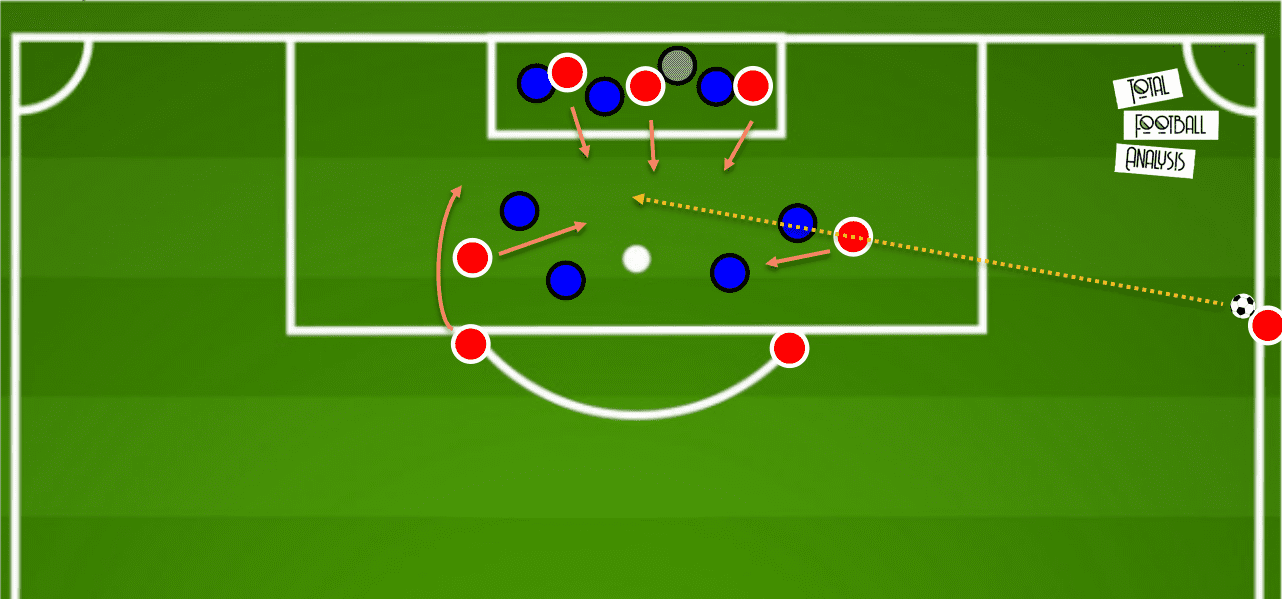
The three players on the goalline will all come out to contest the ball, along with the player at the far edge of the six-yard area. The deep player outside the left side of the penalty area will make a late run into the box to get on the end of any fluffed clearances or flick-ons in space, while the player closest to the throw-in taker, at the near post area, will move centrally to ensure that there are always two players behind the ball.
The presence of two, or sometimes even three players outside the area is important. Given that this is a throw-in, it is unlikely to be delivered with the same pace and power as a free-kick or corner, as much as Tozer possesses incredible strength which he uses to propel the ball into the box from such distances. Thus, the throws are often high and looping and therefore quite slow, and so even if a defender makes first contact and manages to head the ball away, it is unlikely to travel too far outside the area. Therefore, having players outside the area to pick up these clearances and try to take a shot or pick a pass is clever, as it ensures that the opposition are ‘boxed-in’ and cannot clear their lines effectively and quickly.
Another variation of their usual setup can be seen below.
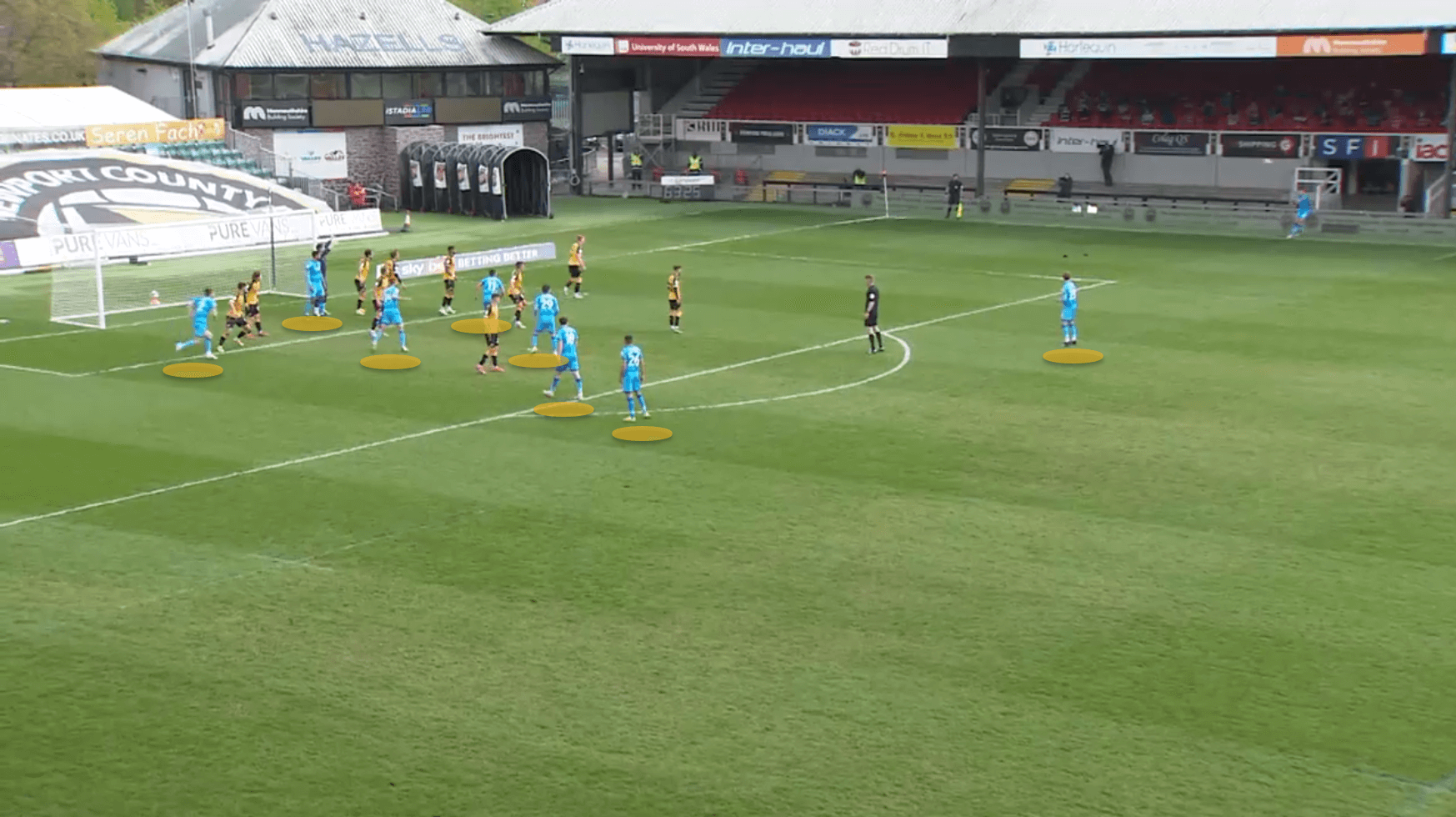
Cheltenham are attacking this throw-in with eight players, with all of them being far more spaced out than in the earlier example. Once again, note how there are two players outside the penalty area for the same reasons as explained above. Another will look to make a run into the box from outside, while the rest of the players all make runs into roughly the same area to try and win the ball, although a couple will hang back and try to find space.
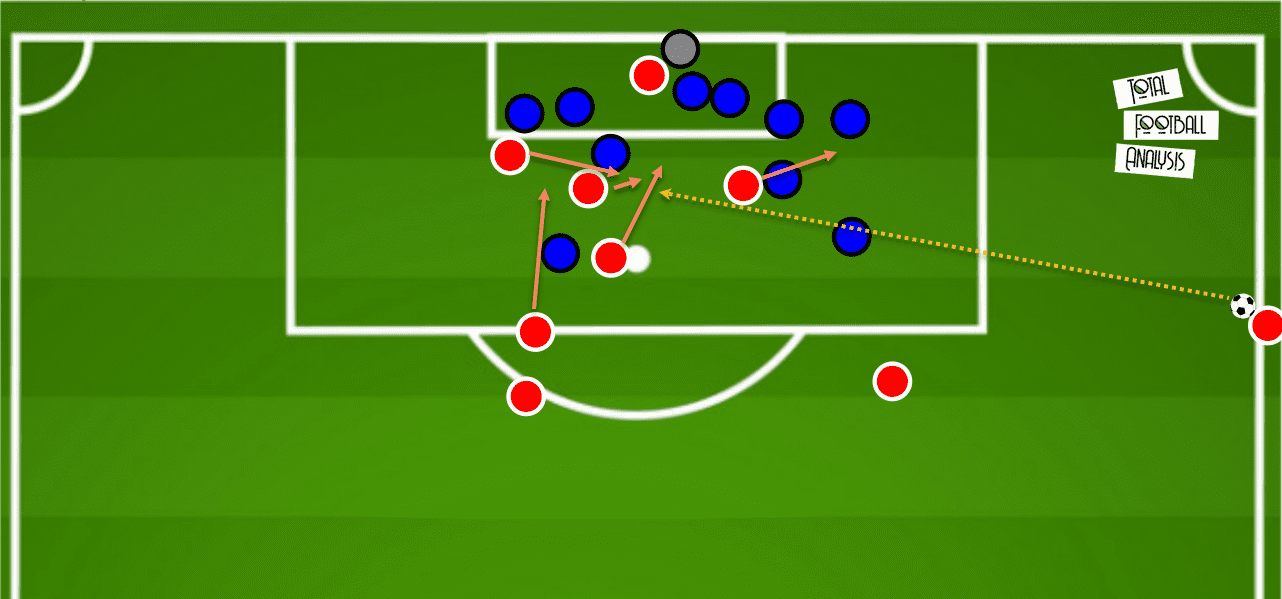
The difference in positioning from the previous example can be seen more clearly here. The opposition is concentrating on blocking the near post area, which is understandable, since that is the most likely location where the throw will be directed. It is extremely difficult to throw the ball to the far post, given the distance from the touchline, and so Cheltenham and Tozer usually took throw-ins towards the near post, or slightly more central, aimed at the space between the penalty area and the six-yard box. There is one late runner into the box from deep, with two players staying back, while one player again attempts to crowd the goalkeeper. There is a bit of a gap between the near post and far post areas, and this is where most of the Cheltenham players will attempt to be when the ball is delivered, with their movement also dragging the opposition with them and therefore opening up the space for the late run from outside the area as well.
Thus, we can see that there are a few standard principles that the Robins tried to utilise in their throw-ins – create space for late runs from deep, crowd the goalkeeper, and try to be positioned in one block when the ball reaches the area to improve the chances of winning the ball, either in the air itself, or through a flick-on fluffed clearance to a man in space.
The effect of crowding the goalkeeper can be seen below as well –
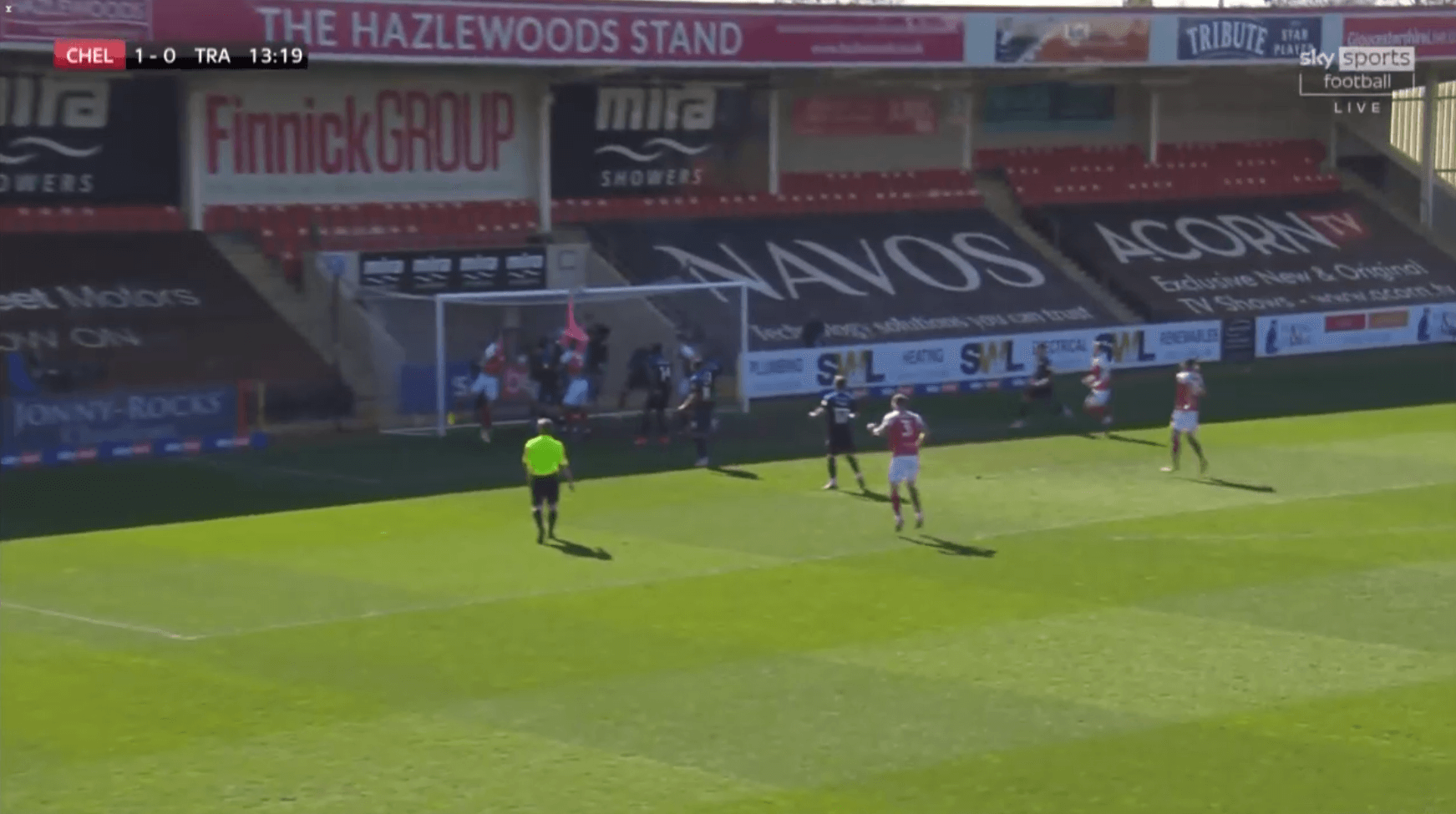
Tozer will sometimes aim his throws directly at the goalkeeper, forcing him to make a save in this manner. Of course, Tozer cannot score directly from a throw, but given the mass of bodies around the keeper, it creates a lot of confusion and doubt, with just a faint touch from an outfield player needed to send the ball into the goal.
Routines
It is also important to note that Cheltenham used long throw-ins across the pitch, not just in the vicinity of the penalty area. While Tozer was the designated long throw-in taker for attacking the box, the rest of the defence, including Sean Long, Will Boyle, Chris Hussey and Charlie Raglan all took throws in deeper areas.
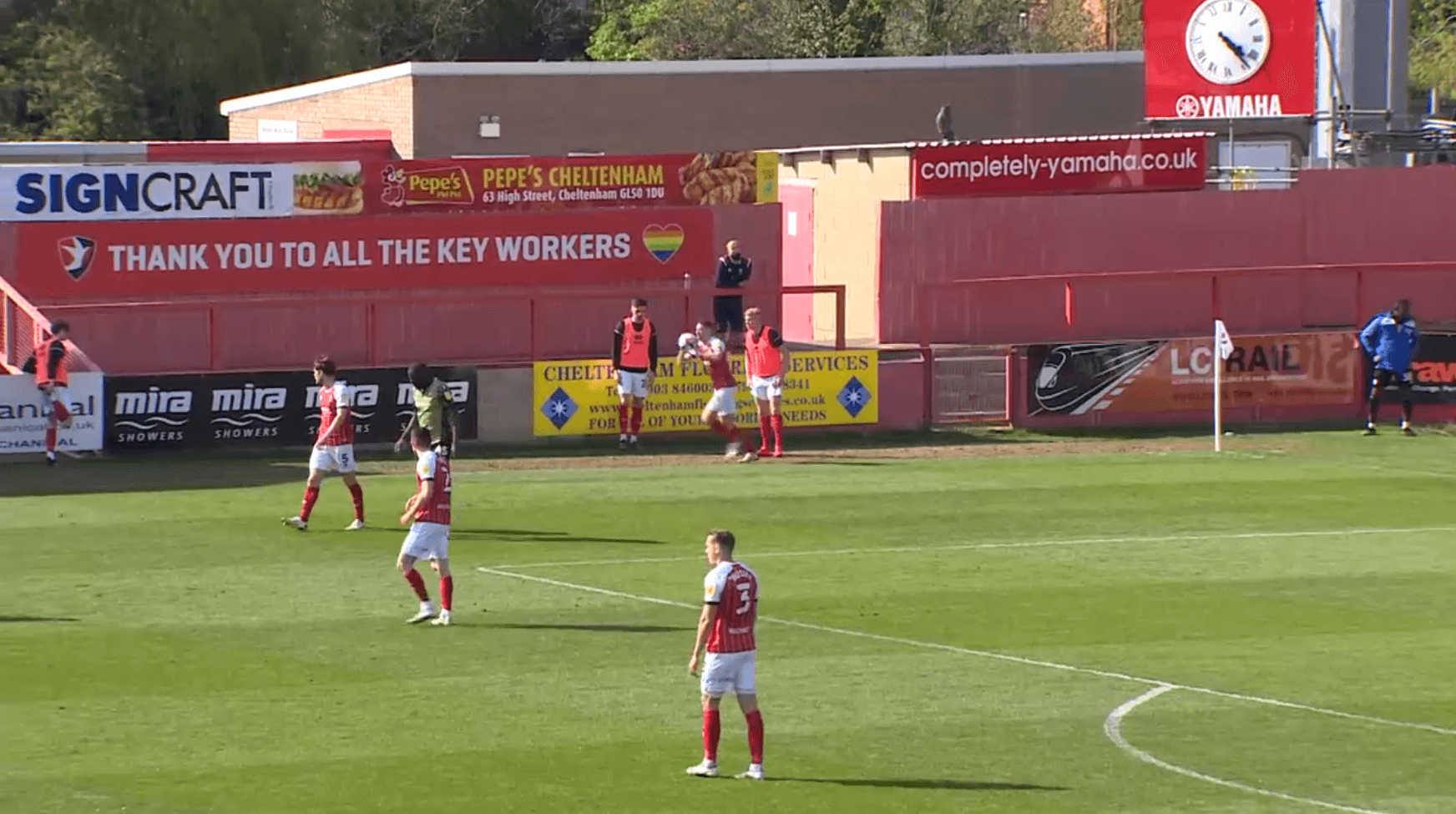
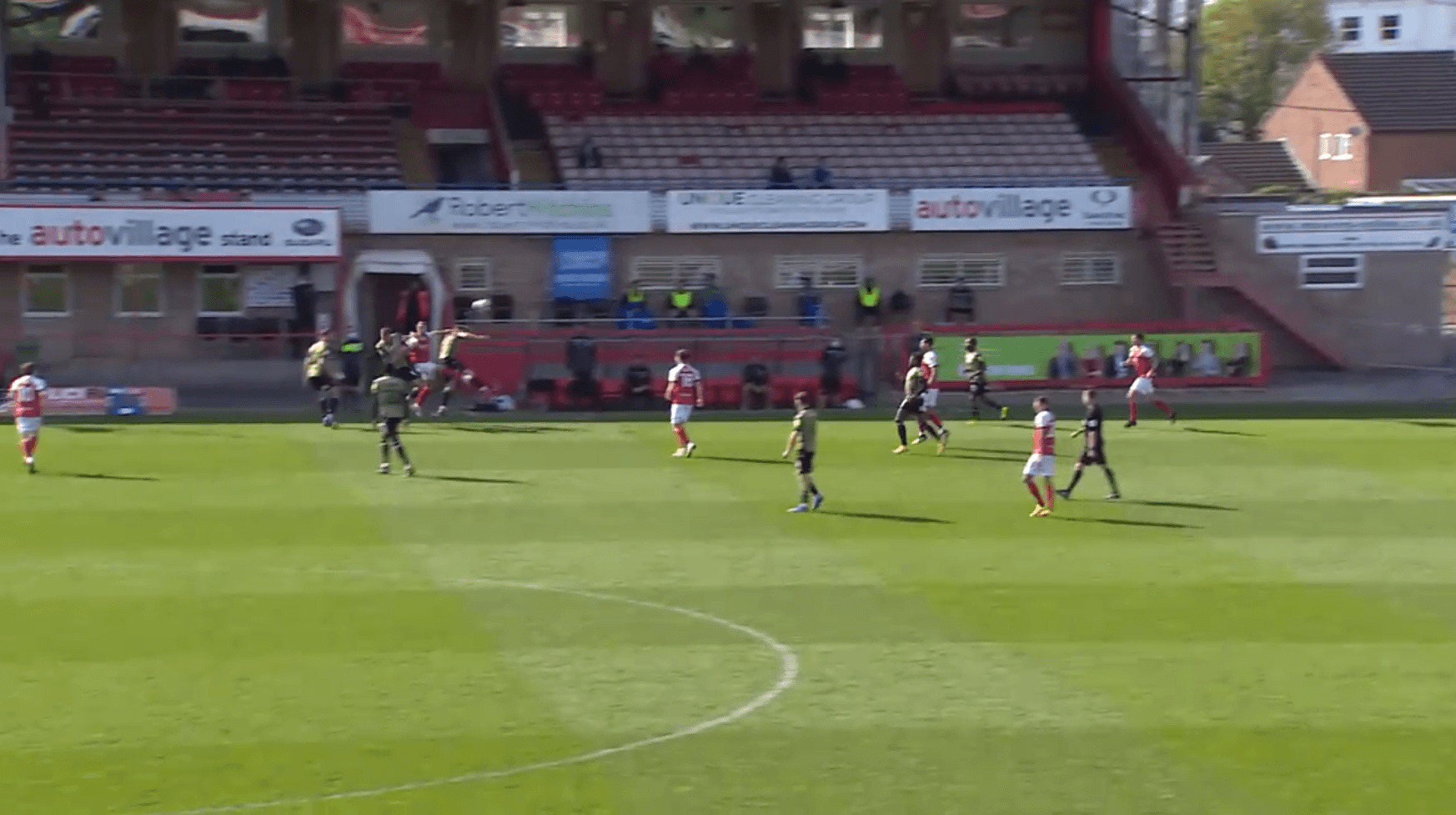
Note just how far the ball is thrown here, with the Cheltenham player contesting the aerial duel just a few yards from the halfway line, from a throw that was taken level with his own penalty area.
Of course, it is their use of throw-ins as an attacking tactic, akin to a set-piece situation, that has attracted all the attention. We have already shown a couple of the standard setups used by Cheltenham during the season, and will now try to look at a few routines from within those initial setups.
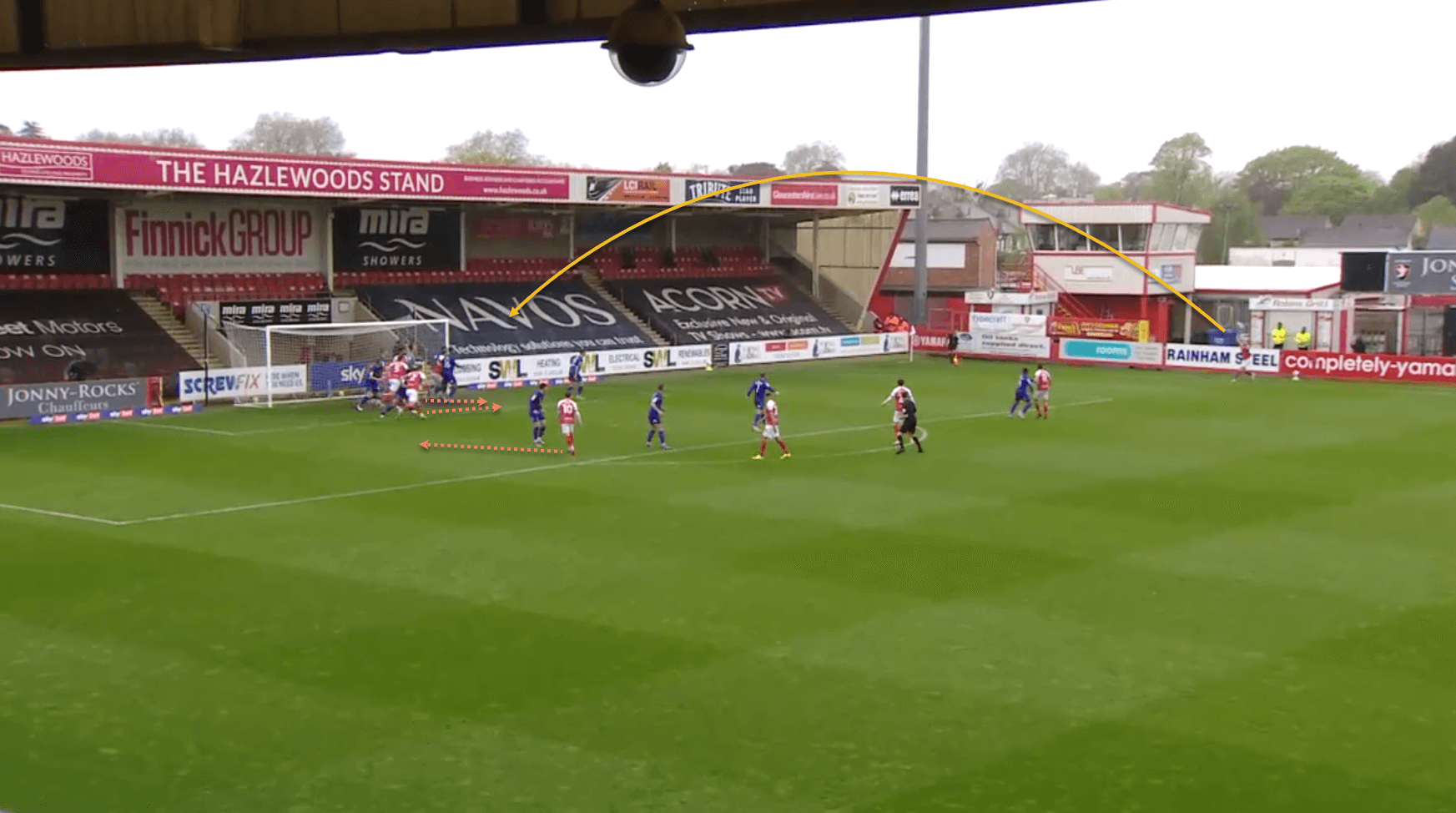
Again, note some of the key principles in play here, as discussed earlier – men outside the area to mop up clearances, one player making a late run towards the far post area, and the rest of the players all rushing to the near post to drag defenders out and create space. We can also see how they have crowded out the goalkeeper here to prevent him from being able to come out and claim the throw.
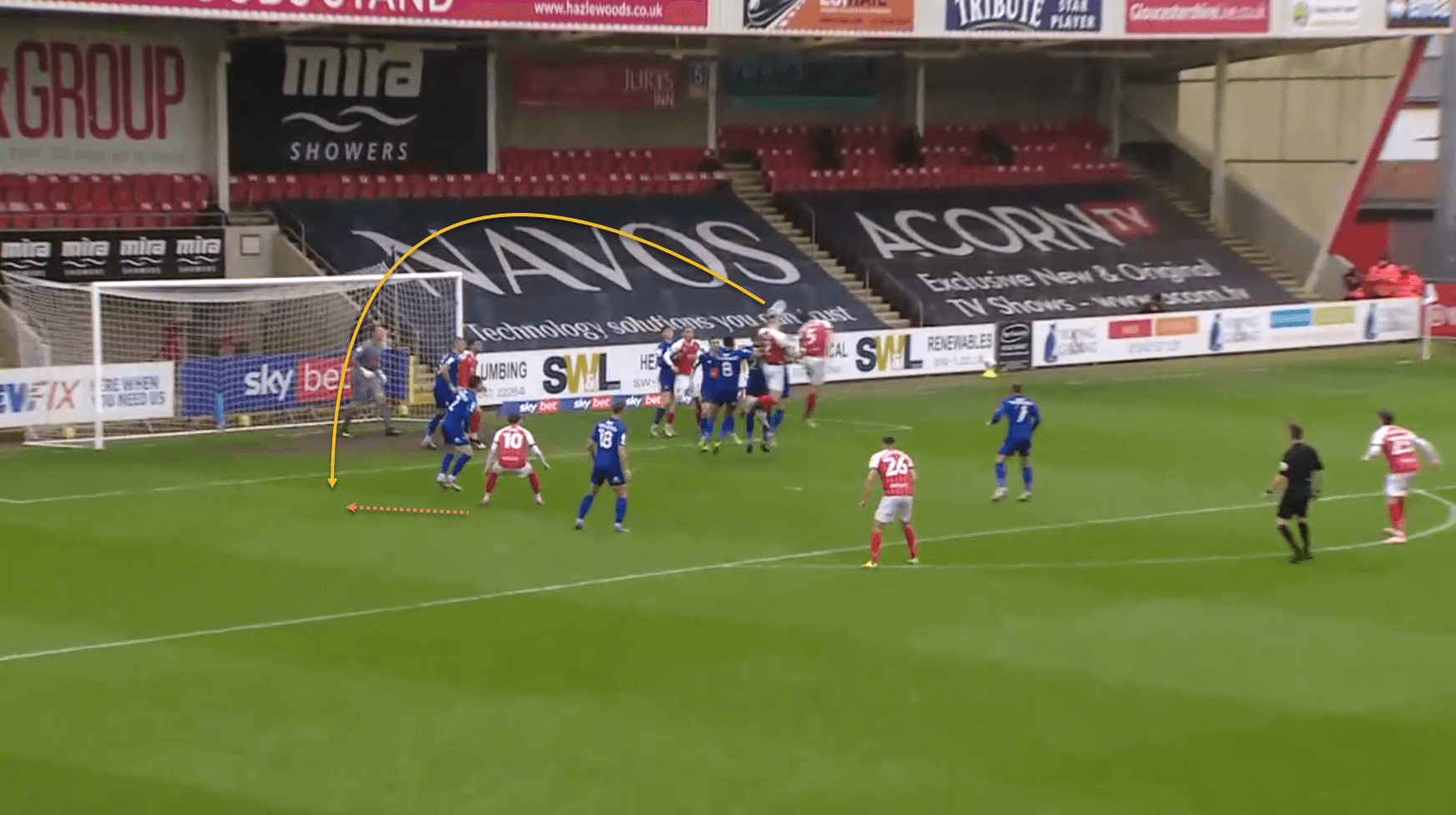
In this case, the Cheltenham player wins the initial header, flicking it on for Alfie May at the far post, but the ball is just a little away from him and he cannot get a clean connection on his shot. However, the space at the fair post is quite visible here, with the opposition all getting drawn to the near post.
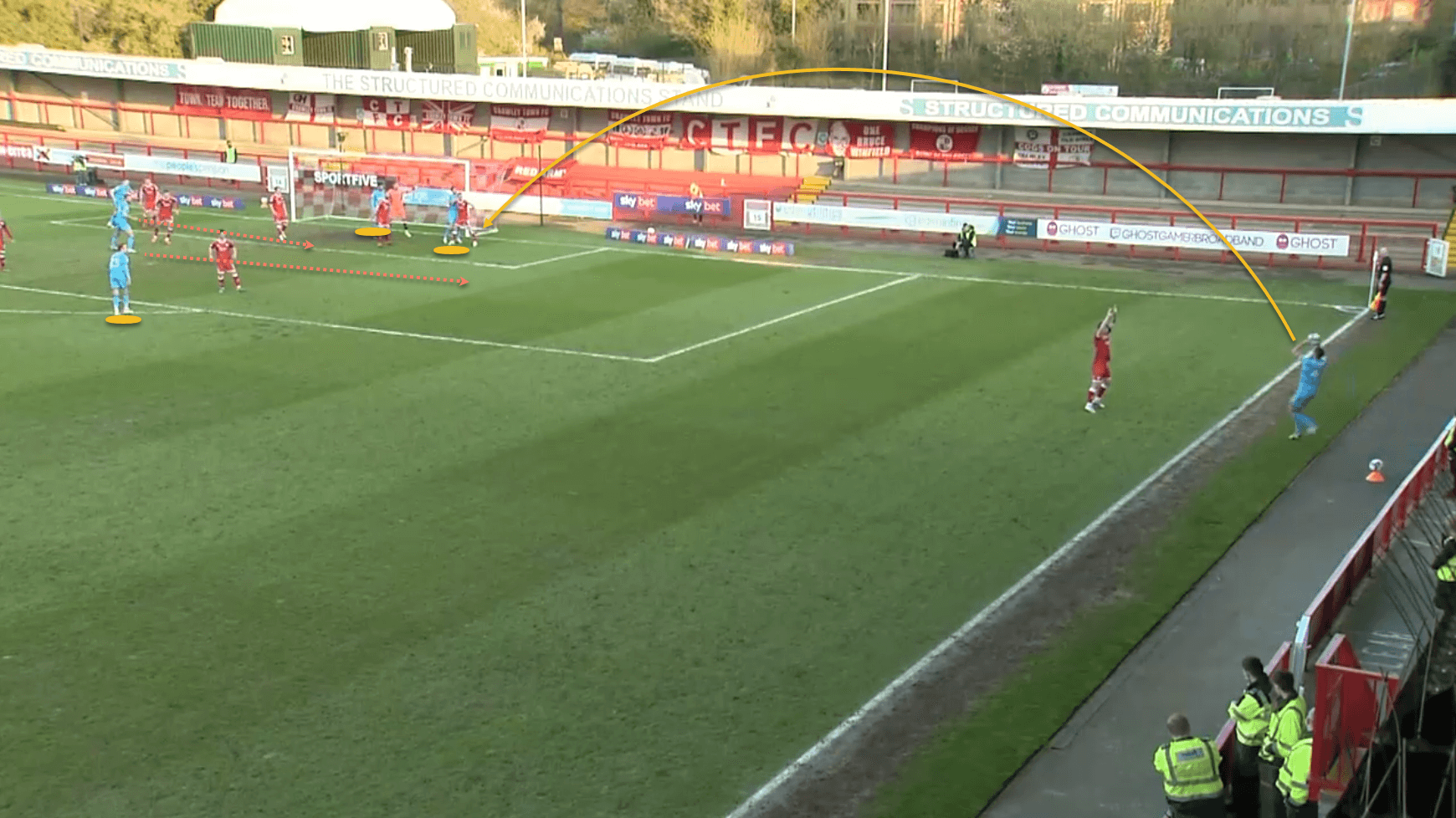
Another example here, with a slightly different setup, as there are two players on the goalline, and two making runs into the near post area.
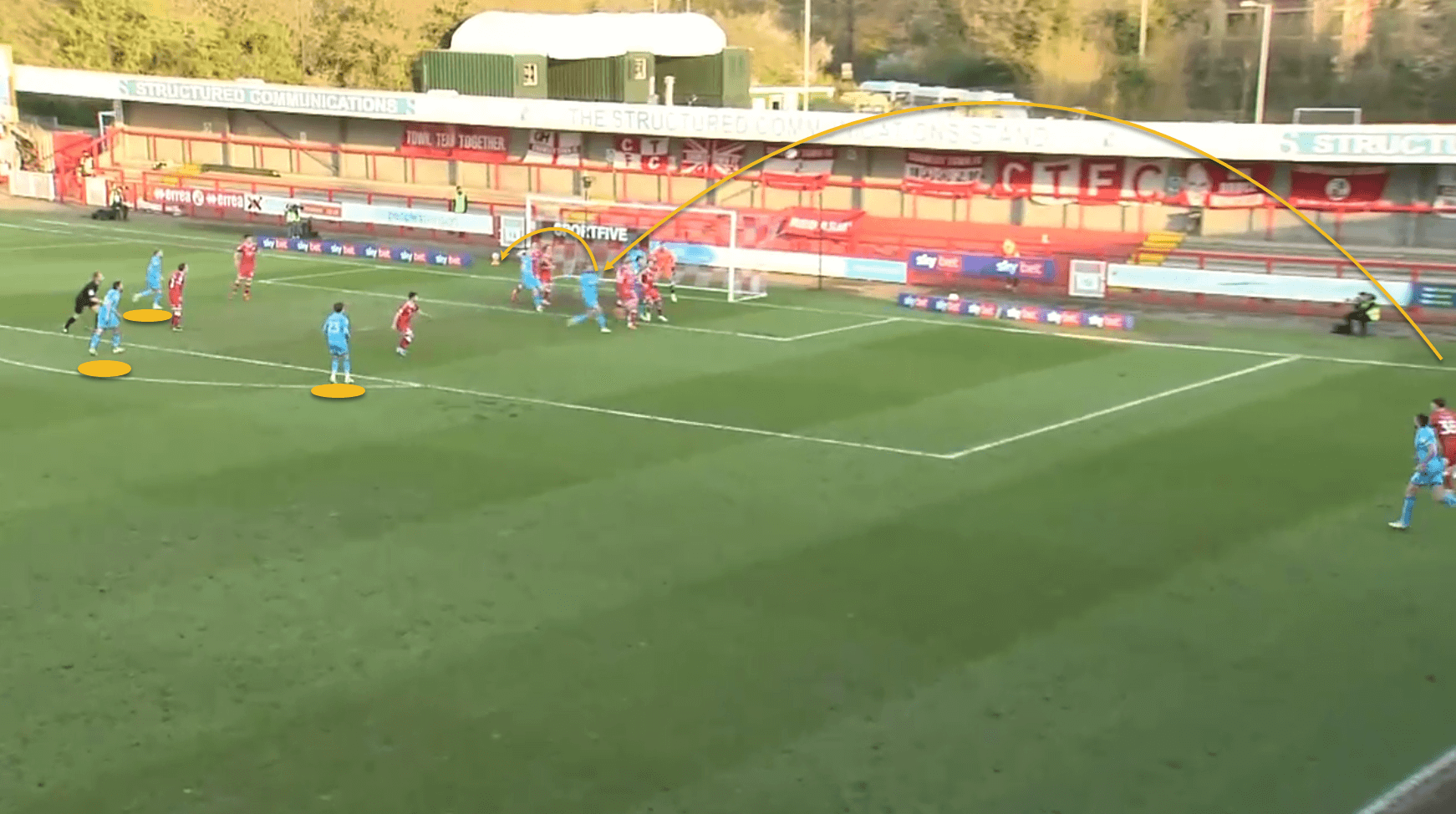
Again, the Cheltenham player wins the initial header and is able to flick it on to the back post, where it just evades his teammate, who had held his run and stayed at the far post rather than coming out to the near post.
Thus, there are slight variations in terms of the runs and positioning of individual players, but the basic structure seems to be the same – crowd the near post, or the central area, and try to win the initial header to flick it on to a teammate in space at the far post.
Here is an example where this strategy worked perfectly, but the goalkeeper was able to make a good save.
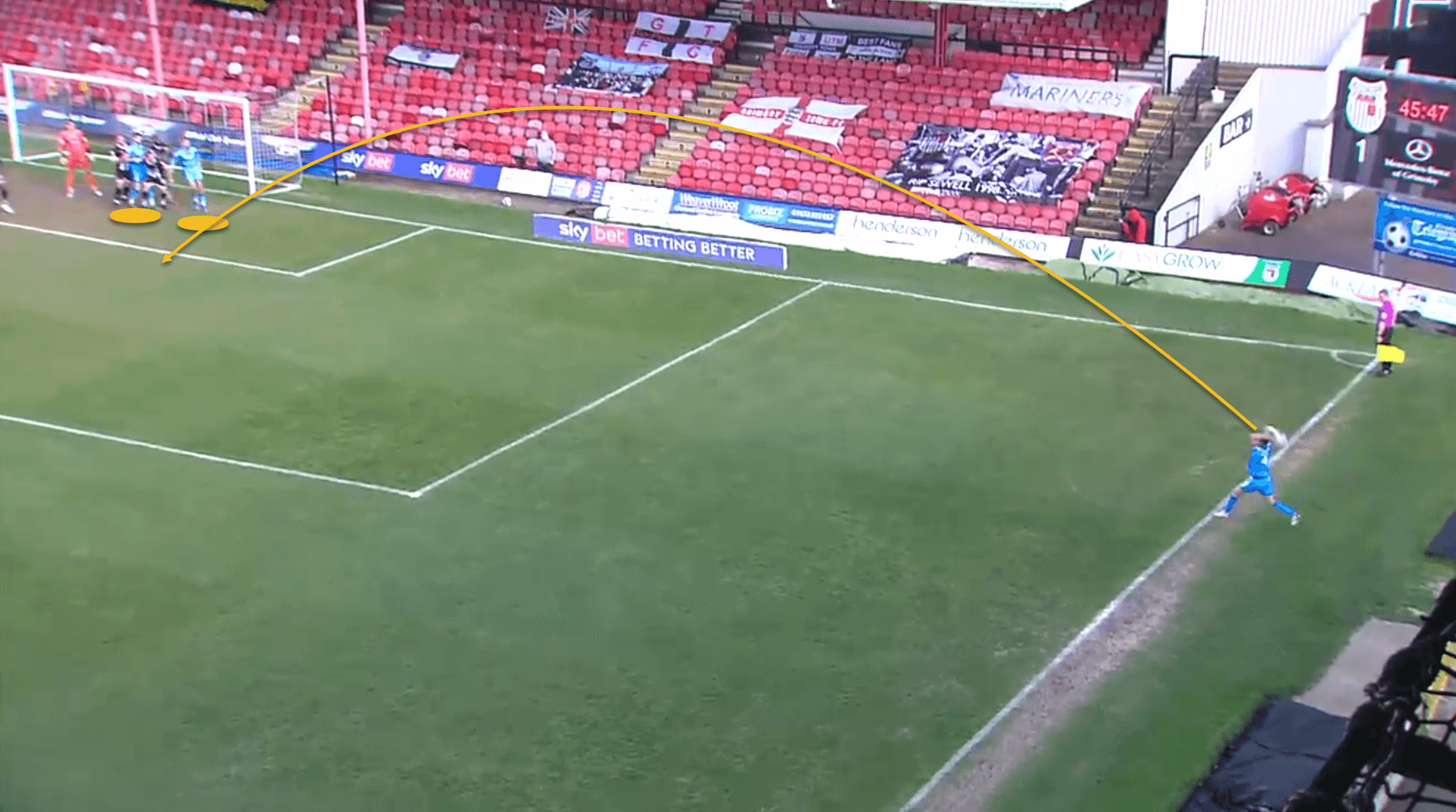
The throw is aimed towards the near post, with the players moving out to contest it…
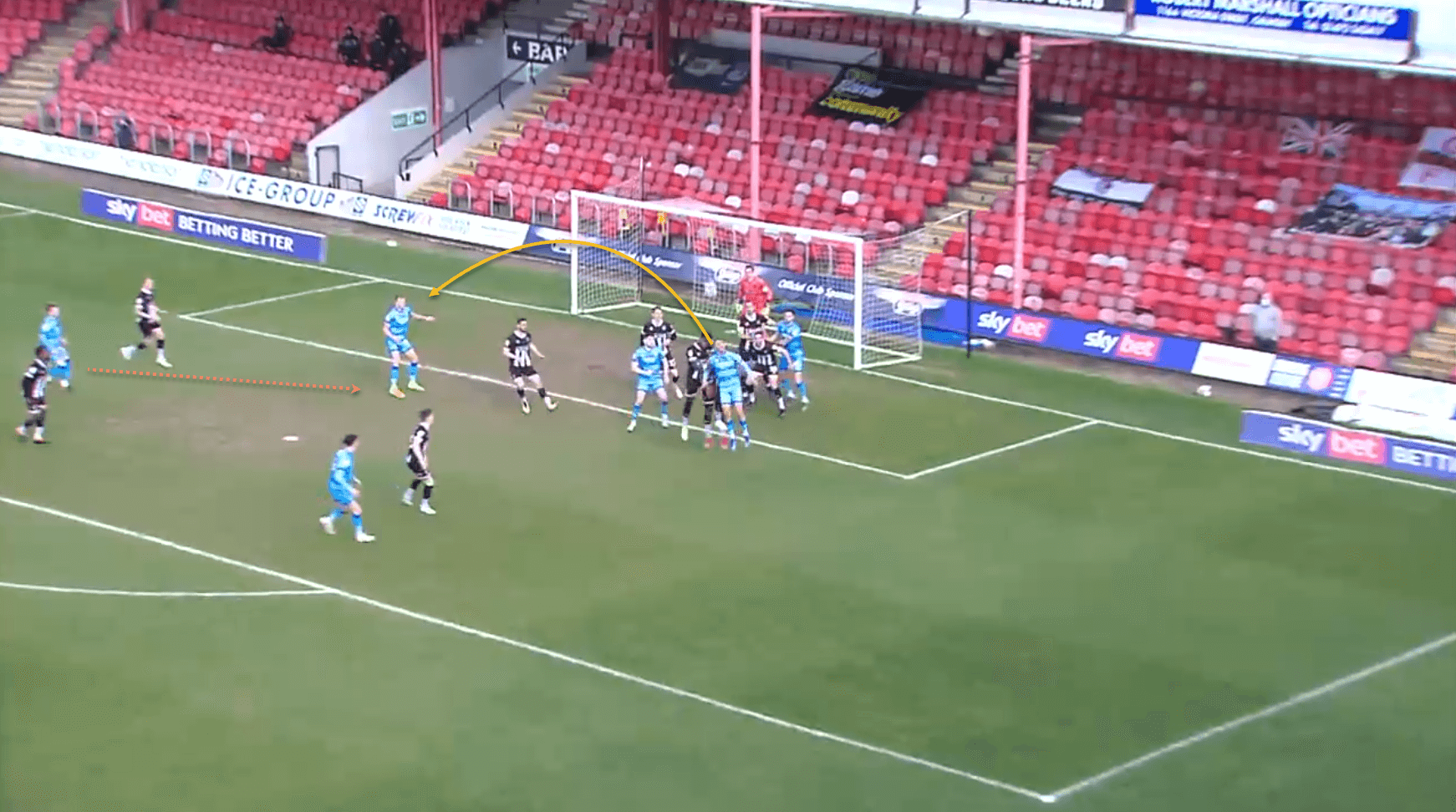
…and the Cheltenham player wins the ball in the air again, flicking it on for his teammate who is in acres of space at the far post. He manages to put his header on target, but the goalkeeper is able to scramble across his line and make the save. Also note how there is another teammate who could have potentially run into the same space had this player also made a run towards the near post.
Conclusion
This has been quite an innovative tactic from Cheltenham Town – most teams only use long throw-ins towards the end of matches where they are losing, and that too as a desperate attempt to get the ball into the box quickly rather than through any well-coached routines. However, this is a strategy that has definitely worked for them, given that Tozer had seven assists in League Two, as well as six ‘indirect’ assists, where a goal was scored following one of his throws. This has been a breath of fresh air to watch, and shows the value of trying to maximize even innocuous situations such as throw-ins. It will therefore be extremely interesting to see if the Robins keep this up in League One, and whether they change their routines and tactics from such situations to catch more teams off guard.





Comments